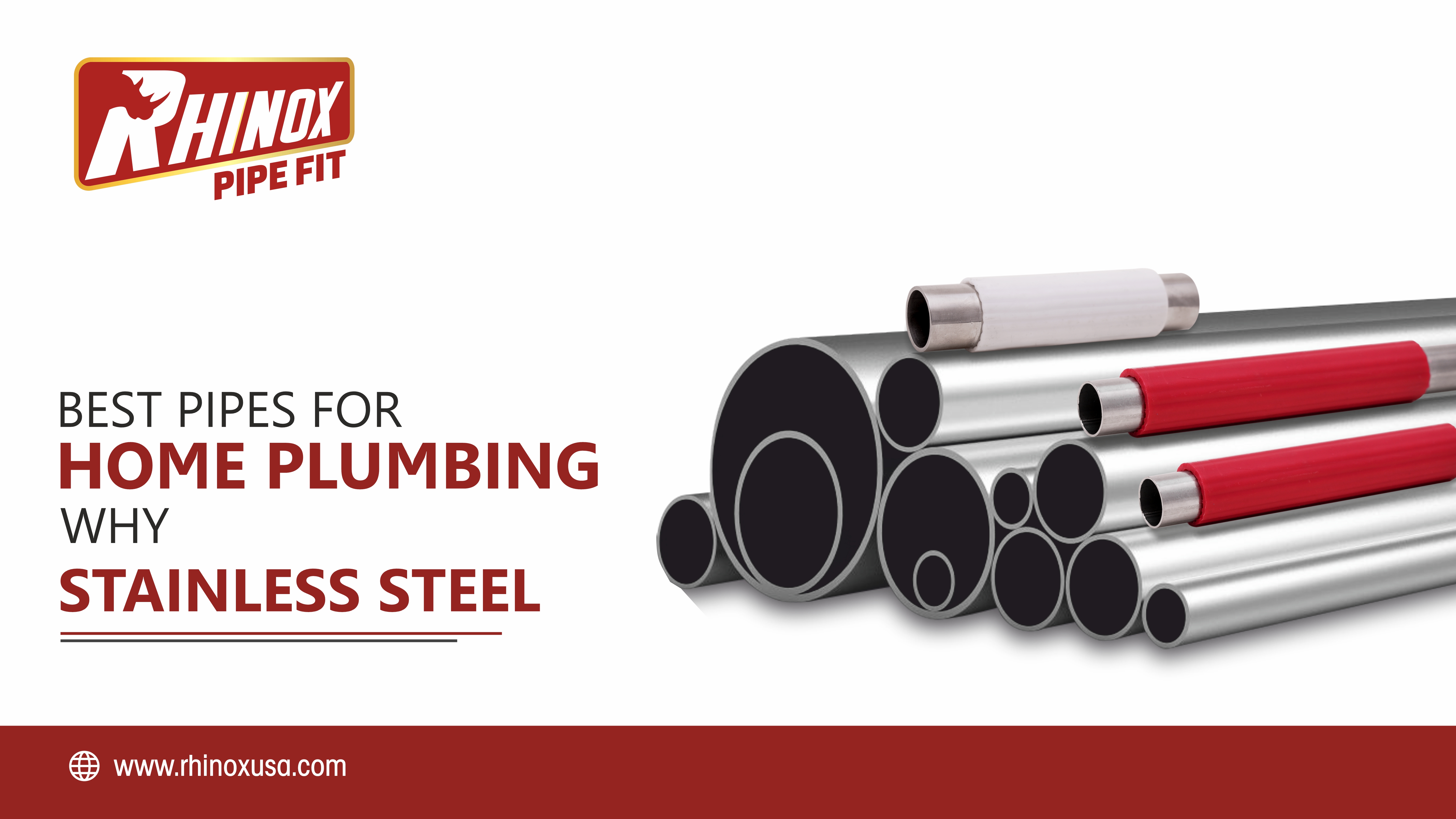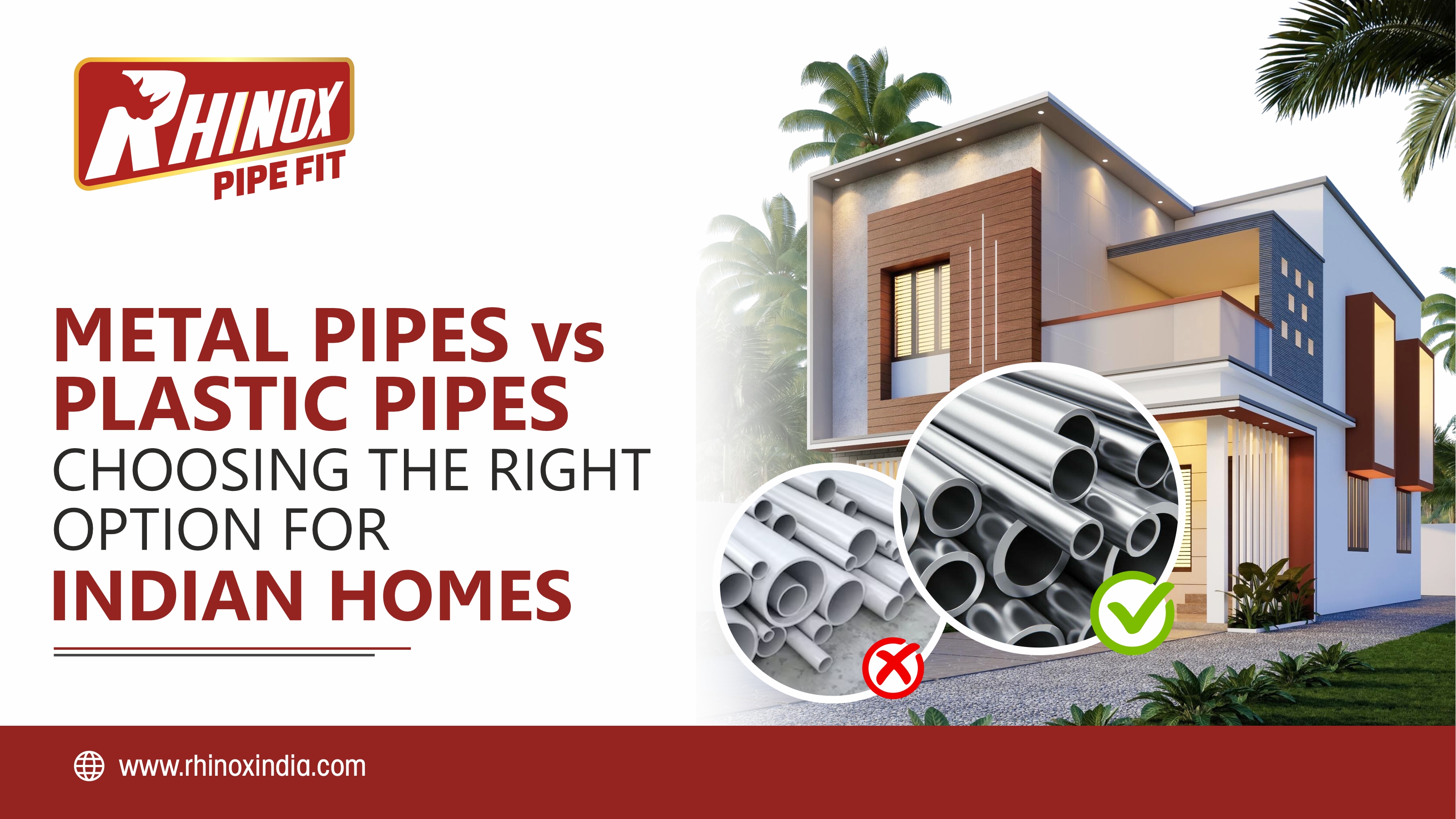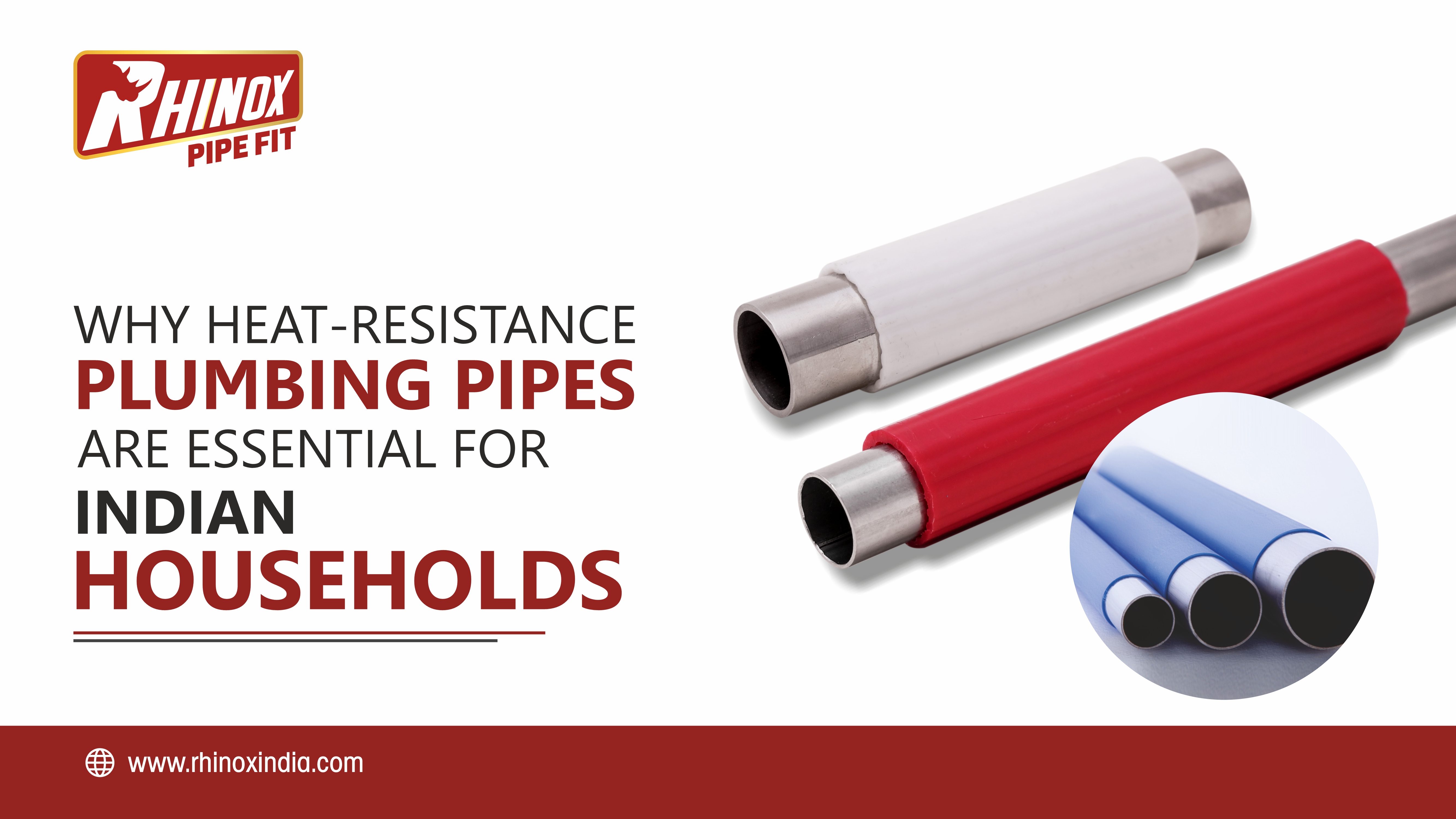
Walk into any plumbing store in India and you’ll see rows of pipes stacked like soldiers, plastic on one side, steel on the other, newer systems like PEX tucked in a corner. And almost every homeowner asks the same question: Which pipe is best for drinking water?
It sounds like a simple query, but the answer is layered. Because choosing the best pipe for drinking water isn’t just about price or availability. It’s about safety, hygiene, long-term durability, and how well the material performs in real Indian conditions.
Why Pipe Choice Matters More Than You Think
We don’t often stop to think about the journey our drinking water takes. From municipal lines to storage tanks, through fittings, and finally out of our taps, it passes through meters of piping. If those pipes aren’t safe, the water isn’t safe.
That’s why homeowners are increasingly asking about safe pipes for drinking water rather than simply what’s cheapest. Your choice here influences everything: taste, hygiene, maintenance costs, and even your health over the long term.
Which Pipe Is Best for Drinking Water in India?
Conditions in India make this a unique discussion. Hot summers, hard water in many regions, and the popularity of geysers and steel water tanks put extra stress on materials. Let’s explore the main options you’ll encounter:
1. Stainless Steel Pipes
Stainless steel pipes are widely considered the best water supply pipes for homes where hygiene and durability matter. They don’t corrode, don’t leach chemicals, and withstand high pressure and heat. For anyone asking which pipe is best for drinking water in India, stainless steel almost always tops the list.
2. PEX Pipes
Flexible, easy to install, and resistant to scaling. They’re popular in some urban projects, but in India’s climate, especially in areas with very hot summers, their long-term performance is still debated.
3. PERT AL PERT Pipes
PERT AL PERT composite pipes are hybrid options with multiple layers, combining polymer flexibility with aluminum reinforcement. These are better than basic plastic but still not as proven as steel when it comes to decades of reliability.
4. Traditional Plastic Pipes (PVC, CPVC)
Still used in many homes because they’re cheap and widely available. But here’s the catch: experts strongly advise don’t use plastic pipes for drinking water, as they can leach chemicals, warp under heat, and degrade faster under Indian conditions.
Water Pipes for Hygiene: Why Material Matters
Hygiene isn’t just about the quality of water coming into your home. It’s also about how your pipes protect that quality.
- Plastic pipes can absorb odors and allow bacterial growth in stagnant water.
- Stainless steel pipes maintain neutrality, they don’t change the taste, smell, or purity of water.
- Multilayer pipes like PERT AL PERT are better than plain plastic but still not fully resistant to microbial buildup.
If you care about water pipes for hygiene, stainless steel remains the benchmark. That’s why hospitals, food industries, and premium housing projects are increasingly moving in this direction.
The Longevity Question
Choosing the best pipe for drinking water isn’t only about what’s safe today; it’s also about what lasts.
- A PVC line might save money upfront but could need replacing within 10–12 years, especially if exposed to heat or sunlight.
- PEX pipes and PERT AL PERT pipes offer better lifespans, but performance depends heavily on installation quality.
- Stainless steel pipes, when installed correctly, can last 40–50 years or more, with minimal maintenance.
In a country where repairing concealed lines means breaking tiles and walls, the longer your system lasts, the better.
Fittings, Services, and the Bigger Picture
Even the best pipe will fail if paired with poor fittings. Reliable water fitting products, good quality joints, and professional plumbing services are as important as the pipe material itself. A stainless steel line with substandard connectors can still leak.
It’s also worth thinking of the system as a whole. If you’re storing water, steel water tanks pair naturally with stainless steel pipelines. This ensures quality from storage to supply, without weak links that compromise hygiene.
Real-Life Example: A Tale of Two Neighbours
Two homeowners in Pune built houses around the same time. One used CPVC pipes for their internal supply, the other invested in stainless steel. Within eight years, the CPVC lines began leaking behind the bathroom tiles, leading to costly rework. The stainless steel system, by contrast, still works like new.
That’s the reality behind the numbers: the best plumbing pipes for homes aren’t just about what you spend today, but about what you don’t have to spend later.
FAQs
Q1: Which pipe is best for drinking water in India?
Stainless steel is widely regarded as the safest and most durable choice for Indian conditions.
Q2: Are plastic pipes safe for drinking water?
Experts recommend that you don't use plastic pipes. They may leach chemicals over time, especially with hot water.
Q3: Are PEX or PERT AL PERT pipes good alternatives?
Yes, they are better than PVC or CPVC, but they still don’t match the hygiene and longevity of stainless steel.
Q4: What are the best plumbing pipes for homes overall?
For long-term reliability, hygiene, and safety, stainless steel pipes are the clear leader.
Q5: How do fittings affect water safety?
Low-quality fittings can introduce leaks or contamination. Always choose certified water fitting products and reliable plumbing services.
Final Thoughts
If you’re wondering about the best pipe for drinking water, don’t just think short-term. Ask yourself: will this system keep my water safe, hygienic, and flowing smoothly for decades?
For Indian homes, with their mix of hot summers, hard water, and demanding usage, stainless steel isn’t just the premium choice, it’s the practical one. Whether it’s pipes for drinking water supply or the larger question of which pipe is best for drinking water in India, the answer remains clear: choose stainless steel, and you’ll rarely have to think about your pipes again.



